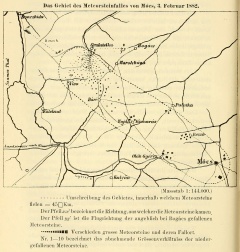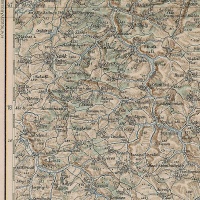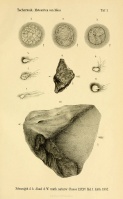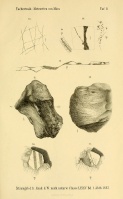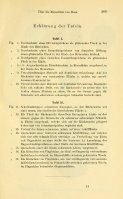(Unless otherwise stated, the copyright of the materials included belong to Jan Woreczko & Wadi.)
Mocs
Z Wiki.Meteoritica.pl
(→Bibliografia) |
|||
| Linia 134: | Linia 134: | ||
* {{Koblitz MetBase}} | * {{Koblitz MetBase}} | ||
| - | * Koch A., (1882), '''Bericht über den am 3. Februar d. J. stattgefundenen Meteorsteinfall von [[Mocs]] in Siebenbürgen''', ''Sitzungsberichte der mathematisch-naturwissenschaftliche Classe der Kaiserlichen Akademie der Wissenschaften'', 85, Abt. 1, 1882, s. 116-132.<ref>z [[:Image:Mocs_map_(Koch_1882).jpg|mapą]] rejonu spadku</ref> Plik [http://www.biodiversitylibrary.org/item/31080 | + | * Koch A., (1882), '''Bericht über den am 3. Februar d. J. stattgefundenen Meteorsteinfall von [[Mocs]] in Siebenbürgen''', ''Sitzungsberichte der mathematisch-naturwissenschaftliche Classe der Kaiserlichen Akademie der Wissenschaften'', 85, Abt. 1, 1882, s. 116-132.<ref>z [[:Image:Mocs_map_(Koch_1882).jpg|mapą]] rejonu spadku</ref> Plik [http://www.biodiversitylibrary.org/item/31080 DjVu]. |
* Koch A., (1883), '''Ergänzender Bericht über den Meteoritenfall bei [[Mocs]] in Siebenburgen am 3. Februar 1882''', ''Tschermaks Mineralogische und Petrographische Mitteilungen'', 5, 1883, s. 234-244. Plik [http://archive.org/details/tschermaksminer27unkngoog IA]. | * Koch A., (1883), '''Ergänzender Bericht über den Meteoritenfall bei [[Mocs]] in Siebenburgen am 3. Februar 1882''', ''Tschermaks Mineralogische und Petrographische Mitteilungen'', 5, 1883, s. 234-244. Plik [http://archive.org/details/tschermaksminer27unkngoog IA]. | ||
| - | * Niessl G. von, (1884), '''Über die astronomischen Verhältnisse bei dem Meteoritenfalle von [[Mocs|Mócs]] in Siebenbürgen am 3. | + | * Niessl G. von, (1884), '''Über die astronomischen Verhältnisse bei dem Meteoritenfalle von [[Mocs|Mócs]] in Siebenbürgen am 3. Februar 1882''', ''Sitzungsberichte der mathematisch-naturwissenschaftliche Classe der Kaiserlichen Akademie der Wissenschaften'', 89, Abt. 2, 1884, s. 283-293. Plik [http://www.landesmuseum.at/datenbanken/digilit/?litnr=37046 PDF]. |
* {{Pilski (2001)}} | * {{Pilski (2001)}} | ||
| Linia 146: | Linia 146: | ||
* {{Török (1882b)}} | * {{Török (1882b)}} | ||
| - | * Tschermak Gustav, (1882), '''Über die Meteoriten von [[Mocs]]''', ''Sitzungsberichte der mathematisch-naturwissenschaftliche Classe der Kaiserlichen Akademie der Wissenschaften'', 85, 1882, s. 195-209.<ref>''Mit 2 Tafeln'' (dodatkowo dwie plansze: [[:Image:Mocs_Taf_I_(Tschermak_1882).jpg|Taf. I]] i [[:Image:Mocs_Taf_II_(Tschermak_1882).jpg|Taf. II]])</ref> Plik [http://www.biodiversitylibrary.org/item/31080 | + | * Tschermak Gustav, (1882), '''Über die Meteoriten von [[Mocs]]''', ''Sitzungsberichte der mathematisch-naturwissenschaftliche Classe der Kaiserlichen Akademie der Wissenschaften'', 85, 1882, s. 195-209.<ref>''Mit 2 Tafeln'' (dodatkowo dwie plansze: [[:Image:Mocs_Taf_I_(Tschermak_1882).jpg|Taf. I]] i [[:Image:Mocs_Taf_II_(Tschermak_1882).jpg|Taf. II]])</ref> Plik [http://www.biodiversitylibrary.org/item/31080 DjVu]. |
{{Koblitz References | 1=After appearance of luminous meteor, and detonations, a shower of stones fell; the number has been estimated at 3000 and the total weight at about 300kg, the largest stone weighing about 56kg, A.Koch, Sitzungsber. Akad. Wiss. Wien, Math.-naturwiss. Kl., 1882, 85, (1), p.116, A.Koch, Tschermaks Min. Petr. Mitt., 1883, 5, p.234, G.von Niessl, Sitzungsber. Akad. Wiss. Wien, Math.-naturwiss. Kl., 1884, 89, (2), p.283, M.H.Hey, Cat. Met., 1966, p.310. Analysis, 21.81% total Fe, B.Mason and H.B.Wiik, Am. Mus. Novit., 1961, (2069). Olivine Fa24, B.Mason, GCA, 1963, 27, p.1011. Further analysis, 21.82% total Fe, V.Y.Kharitonova, Meteoritika, 1965, 26, p.146. Study of metal phase, H.C.Urey and T.Mayeda, GCA, 1959, 17, p.113. Study of thermal release of noble gases from mineral separates, J.C.Huneke et al., Meteorite Research, ed. P.M.Millman, D.Reidel, Dordrecht, Holland, 1969, p.901. Metallography and Ni-concentration profiles of taenite in metal grains, G.J.Taylor and D.Heymann, GCA, 1971, 35, p.175. Ni and Ir contents, O.Müller et al., GCA, 1971, 35, p.1121. Uranium content, D.E.Fisher, GCA, 1972, 36, p.15. Partial INAA, R.A.Schmitt et al., Meteoritics, 1972, 7, p.131. Ga and Ge contents of metal phase, C.-L.Chou and A.J.Cohen, GCA, 1973, 37, p.315. Al-26 data, I.R.Cameron and Z.Top, GCA, 1975, 39, p.1705. Oxygen isotopic composition of mineral fractions, R.N.Clayton et al., Earth Planet. Sci. Lett., 1976, 30, p.10. Trace element abundances, references, E.Rambaldi, Earth Planet. Sci. Lett., 1977, 33, p.407, A.L.Graham et al., Cat. Met., 1985, p.239. Infrared photometry, albedo, JHK colors, M.Leake et al., Meteoritics, 1978, 13, p.101. Oxygen isotopic composition, N.Onuna et al., GCA, 1972, 36, p.157; see also, R.N.Clayton et al., GCA, 1991, 55, p.2317. Exposure age based on spallogenic Mn-53 content, P.Englert and W.Herr, GCA, 1978, 42, p.1635. Ti, Zr and Hf abundances, M.Shima, GCA, 1979, 43, p.353. Cosmic ray tracks, N.Bhandari et al., Nucl. Tracks, 1980, 4, p.213. Pu, Rb-Sr and Sm-Nd isotopic composition of phospates, J.C.Brannon et al., LPSC, 1987, 18, p.121 (abs.). Kr-Kr exposure age, 14.9±2.5 Ma, O.Eugster, LPSC, 1988, 19, p.311 (abs.). Boron abundance and isotopic composition, M.Zhai and D.M.Shaw, Meteoritics, 1994, 29, p.607; see also, M.Zhai et al., GCA, 1996, 60, p.4877. Study of shock effects in olivine, fayalite content, shock stage S5, O.G.Iancu et al., Meteoritics, 1995, 30, p.524 (abs.). Classification as L5-6, mineral and bulk chemical analysis, olivine Fa23-27, pyroxene Fs18-23, shock classification S3-5, Y.Miura et al., Proc. NIPR Symp. Ant. Met., 1995, (8), p.153. Cosmogenic radionuclide profile of the Mocs strewn field, T.E.Ferko and M.E.Lipschutz, LPSC, 1996, 27, p.357 (abs.). Bulk density and porosity, M.Terho et al., Studia Geophysica et Geodaedica, 1993, 37, p.65; see also, D.T.Britt and G.J.Consolmagno, MAPS, 2003, 38, p.1161; D.T.Britt and G.J.Consolmagno, LPSC, 1997, 28, p.159 (abs.); G.J.Consolmagno and D.T.Britt, MAPS, 1998, 33, p.1231. EPMA analysis of fusion crust, M.J.Genge and M.M.Grady, MAPS, 1999, 34, p.341. Determination of bulk density, S.L.Wilkison and M.S.Robinson, MAPS, 2000, 35, p.1203. Exposure history based on cosmogenic radionuclide and noble gas data, T.E.Ferko et al., MAPS, 2000, 35, p.1215. Magnetic susceptibility, P.Rochette et al., MAPS, 2003, 38, p.251. Density and porosity, S.L.Wilkinson et al., MAPS, 2003, 38, p.1533. Cu isotopic composition, J.M.Luck et al., GCA, 2003, 67, p.143. Zn abundance and isotopic composition, J.-M.Luck et al., GCA, 2005, 69, p.5351.}} | {{Koblitz References | 1=After appearance of luminous meteor, and detonations, a shower of stones fell; the number has been estimated at 3000 and the total weight at about 300kg, the largest stone weighing about 56kg, A.Koch, Sitzungsber. Akad. Wiss. Wien, Math.-naturwiss. Kl., 1882, 85, (1), p.116, A.Koch, Tschermaks Min. Petr. Mitt., 1883, 5, p.234, G.von Niessl, Sitzungsber. Akad. Wiss. Wien, Math.-naturwiss. Kl., 1884, 89, (2), p.283, M.H.Hey, Cat. Met., 1966, p.310. Analysis, 21.81% total Fe, B.Mason and H.B.Wiik, Am. Mus. Novit., 1961, (2069). Olivine Fa24, B.Mason, GCA, 1963, 27, p.1011. Further analysis, 21.82% total Fe, V.Y.Kharitonova, Meteoritika, 1965, 26, p.146. Study of metal phase, H.C.Urey and T.Mayeda, GCA, 1959, 17, p.113. Study of thermal release of noble gases from mineral separates, J.C.Huneke et al., Meteorite Research, ed. P.M.Millman, D.Reidel, Dordrecht, Holland, 1969, p.901. Metallography and Ni-concentration profiles of taenite in metal grains, G.J.Taylor and D.Heymann, GCA, 1971, 35, p.175. Ni and Ir contents, O.Müller et al., GCA, 1971, 35, p.1121. Uranium content, D.E.Fisher, GCA, 1972, 36, p.15. Partial INAA, R.A.Schmitt et al., Meteoritics, 1972, 7, p.131. Ga and Ge contents of metal phase, C.-L.Chou and A.J.Cohen, GCA, 1973, 37, p.315. Al-26 data, I.R.Cameron and Z.Top, GCA, 1975, 39, p.1705. Oxygen isotopic composition of mineral fractions, R.N.Clayton et al., Earth Planet. Sci. Lett., 1976, 30, p.10. Trace element abundances, references, E.Rambaldi, Earth Planet. Sci. Lett., 1977, 33, p.407, A.L.Graham et al., Cat. Met., 1985, p.239. Infrared photometry, albedo, JHK colors, M.Leake et al., Meteoritics, 1978, 13, p.101. Oxygen isotopic composition, N.Onuna et al., GCA, 1972, 36, p.157; see also, R.N.Clayton et al., GCA, 1991, 55, p.2317. Exposure age based on spallogenic Mn-53 content, P.Englert and W.Herr, GCA, 1978, 42, p.1635. Ti, Zr and Hf abundances, M.Shima, GCA, 1979, 43, p.353. Cosmic ray tracks, N.Bhandari et al., Nucl. Tracks, 1980, 4, p.213. Pu, Rb-Sr and Sm-Nd isotopic composition of phospates, J.C.Brannon et al., LPSC, 1987, 18, p.121 (abs.). Kr-Kr exposure age, 14.9±2.5 Ma, O.Eugster, LPSC, 1988, 19, p.311 (abs.). Boron abundance and isotopic composition, M.Zhai and D.M.Shaw, Meteoritics, 1994, 29, p.607; see also, M.Zhai et al., GCA, 1996, 60, p.4877. Study of shock effects in olivine, fayalite content, shock stage S5, O.G.Iancu et al., Meteoritics, 1995, 30, p.524 (abs.). Classification as L5-6, mineral and bulk chemical analysis, olivine Fa23-27, pyroxene Fs18-23, shock classification S3-5, Y.Miura et al., Proc. NIPR Symp. Ant. Met., 1995, (8), p.153. Cosmogenic radionuclide profile of the Mocs strewn field, T.E.Ferko and M.E.Lipschutz, LPSC, 1996, 27, p.357 (abs.). Bulk density and porosity, M.Terho et al., Studia Geophysica et Geodaedica, 1993, 37, p.65; see also, D.T.Britt and G.J.Consolmagno, MAPS, 2003, 38, p.1161; D.T.Britt and G.J.Consolmagno, LPSC, 1997, 28, p.159 (abs.); G.J.Consolmagno and D.T.Britt, MAPS, 1998, 33, p.1231. EPMA analysis of fusion crust, M.J.Genge and M.M.Grady, MAPS, 1999, 34, p.341. Determination of bulk density, S.L.Wilkison and M.S.Robinson, MAPS, 2000, 35, p.1203. Exposure history based on cosmogenic radionuclide and noble gas data, T.E.Ferko et al., MAPS, 2000, 35, p.1215. Magnetic susceptibility, P.Rochette et al., MAPS, 2003, 38, p.251. Density and porosity, S.L.Wilkinson et al., MAPS, 2003, 38, p.1533. Cu isotopic composition, J.M.Luck et al., GCA, 2003, 67, p.143. Zn abundance and isotopic composition, J.-M.Luck et al., GCA, 2005, 69, p.5351.}} | ||
Wersja z 20:48, 17 lis 2013
| Mocs → | |
| Spadek | |
| Lokalizacja | Cluj[1], Rumunia |
| Położenie[2] | 46°48'N, 24°02'E |
| Data | 3 lutego 1882 roku, 16:00 (piątek) |
| Charakterystyka | |
| Typ | chondryt zwyczajny, L5-6[3] |
| Masa | 300 kg, największy okaz 35,7 kg[4] |
| Liczba okazów | ~3000 okazów, deszcz meteorytów |
| Cechy | stopień szokowy S3-5 |
| Meteoritical Bulletin Database | |
| Synonimy → | |
| w NHM Cat: Bare, Gjilatelke, Gyulateke, Gyulatelke, Keszu, Klausemburg, Klausenburg[1], Kyolos, Marokháza, Mociu, Modok, Olah Gyéres, Palatka, Vajda-Kamaras, Visa; w MetBase: Marokhaza, Moci; po rumuńsku: Mociu; po węgiersku: Mócsi | |
Spadek deszczu meteorytów 3 lutego 1882 roku (piątek) w okolicy miejscowości Mociu (dawniej Mocs) w Rumunii (chondryt zwyczajny L5-6[3], TKW 300 kg).
Jasną kulę ognia zaobserwowano początkowo powyżej krainy Hont vármegye na północ od Budapesztu. Zmierzała ona w kierunku południowo-wschodnim nad Transylwanię. Spadkowi meteorytów towarzyszyły trzy silne detonacje i dźwięki podobne do grzechotania i bzyczenia. Na północny-zachód od rumuńskiego miasta Mocs (obecnie Mociu) i w samym mieście spadł deszcz meteorytów. Na silnie wydłużonym obszarze (elipsie spadku) rozciągającym się z NW na SE o powierzchni około 60 km2 zebrano po spadku około 3000 okazów meteorytów. Największy znaleziono w Mocs i ważył 35,7 kg[4]. Rozkład wielkości okazów odpowiada prostemu modelowi fragmentacji i dystrybucji mas. Opis okoliczności spadku, wagi i cechy znalezionych okazów oraz ich ilość i lokalizację opisał Koch w swoich artykułach (Koch 1882, 1883).
Był to jeden z najliczniejszych deszczy meteorytów w Europie. Wielkość obszaru spadku meteorytów Mocs jest porównywalna z elipsą spadku meteorytu Pułtusk.
Nie mam informacji o ewentualnych późniejszych znaleziskach okazów z tego spadku.
Okazy i fragmenty meteorytu Mocs znajdują się dziś w wielu kolekcjach. Największe zbiory:
Zbiór waga okazów
(Koblitz MetBase)Vienna, Naturhist. Mus. 118 kg około 1600 okazów[5] Cluj, Mus. 37,0 kg w tym okaz około 32,5 kg Budapest, Nat. Mus. 16,1 kg[6] London, Nat. Hist. Mus. 14,8 kg Washington, Natl. Mus. Nat. Hist. 7 kg Budapest, Eötvös Lorand Univ. 6448 g Chicago, Field Mus. Nat. Hist. 6066 g Paris, Mus. d'Hist. Nat. 3,33 kg Warsaw, Geol. Inst., Polish Acad. Sci. 212 g cs 213,37 g (Pilski 2001) Wroclaw, Dept. Min. Petrol., Univ. 22 g hs 21,5 g (Pilski 2001)
W polskich prywatnych kolekcjach znajdują się tylko małe fragmenty tego meteorytu.
Lokalizacja
(B) Baré, (G) Gyulatelka, (K) Keszü, (M) Marokháza, Mocs, (P) Palatka, (O) Oláh Gyéres, (V) Visa, Vajda Kamarás
Schematyczny rejon spadku
* W 2018 roku Google zmieniło zasady działania apletu, mapa może wyświetlać się niepoprawnie (pomaga Ctrl+F5); więcej → Szablon:GEMap-MyWiki
Obecnie rumuńska miejscowość Mocs nazywa się Mociu.
Bolid leciał od północnego zachodu na południowy wschód.
Spadło (zebrano) około 3000 okazów na obszarze o eliptycznym kształcie, rozmiarze ~4×15 km (3×20 km wg Koch 1883) i powierzchni około 60 km2.
Wielkość zbieranych kamieni rosła od strony NW obszaru w kierunku SE (najmniejsze okazy znaleziono w okolicach Gyulatelka (obecnie Coasta), Visa (Vişea) i Marokháza (Tăuşeni); średnie: Baré (Bărăi), Vajda Kamarás (Vaida-Cămăraş) i Palatka (Pălatca); największe: Oláh Gyéres (Ghirişu Român), Keszü (Chesău) i Mocs (obecnie Mociu)), największy okaz o wadze około 35,7 kg[4] w samym Mocs (Koch 1882, 1883).
Największe okazy (Koch 1883):
lokalizacja waga (kg) Mocs
Oláh Gyéres-Mocs
Oláh Gyéres
Palatka
Keszü
Vajda Kamarás
Keszü-Palatka35,7
8,5
8,37, 6,06, 5,6
8,15
4,6
3,194, 2,15
2,7, 2,13
Nie znaleziono informacji o ewentualnych późniejszych znaleziskach okazów z tego spadku, ale szukać chyba warto.
Mapy
Galerie
Meteoryty ze zbiorów Muzeum Historii Naturalnej w Budapeszcie (fot. Wadi & Jan Woreczko)
Gross-Divina main mass (MHN Budapeszt).jpg
Masa główna chondrytu zwyczajnego H5 Gross-Divina. Po lewej stronie dwa okazy meteorytu Mocs (8,465 i 2,235 kg), w prawym dolnym rogu meteoryt Ofehértó |
Okazy meteorytu Mocs (źródło: Tschermak 1882)
Więcej → Mocs/Galeria
Bibliografia
- Brandstätter Franz, Ferrière Ludovic, Köberl Christian, (2013), Meteorites: Witnesses of the Origin of the Solar System (Meteoriten: Zeitzeugen der Entstehung des Sonnensystems), Edition Lammerhuber, 2013, ss. 272.[7] ISBN 978-3901753435.
- Döll Eduard, (1882), Die Meteorsteine von Mócs. Bemerkungen über die rundlichen Vertiefungen, die Gestalt und Rotation der Meteoriten und eine Fallzone derselben (Mit 4 Lichtdruck-Tafeln (Nr. V-VIII.), Jahrbuch der Kaiserlich-Königlichen Geologischen Reichsanstalt, 32, 1882, s. 421-434 (ilustracje).[8] Plik DjVu.
- Grady Monica M., (2000), Catalogue of Meteorites. 5th Ed., Natural History Museum, Cambridge University Press, London, UK, 2000. ISBN 978-0521663038. Plik PDF.
- Koblitz Jörn, MetBase. Meteorite Data Retrieval Software, Version 7.3 (CD-ROM), Ritterhude, Germany 1994-2012. MetBase.
- Koch A., (1882), Bericht über den am 3. Februar d. J. stattgefundenen Meteorsteinfall von Mocs in Siebenbürgen, Sitzungsberichte der mathematisch-naturwissenschaftliche Classe der Kaiserlichen Akademie der Wissenschaften, 85, Abt. 1, 1882, s. 116-132.[9] Plik DjVu.
- Koch A., (1883), Ergänzender Bericht über den Meteoritenfall bei Mocs in Siebenburgen am 3. Februar 1882, Tschermaks Mineralogische und Petrographische Mitteilungen, 5, 1883, s. 234-244. Plik IA.
- Niessl G. von, (1884), Über die astronomischen Verhältnisse bei dem Meteoritenfalle von Mócs in Siebenbürgen am 3. Februar 1882, Sitzungsberichte der mathematisch-naturwissenschaftliche Classe der Kaiserlichen Akademie der Wissenschaften, 89, Abt. 2, 1884, s. 283-293. Plik PDF.
- Pilski Andrzej S., (2001), Meteoryty w zbiorach polskich, Olsztyn 2001.[10]
- Tokody László, Dudichné Vendl Mária, (1951), Magyarország meteoritgyűjteményei (Meteorite collections in Hungary), Akadémiai Kiadó, Budapest 1951, ss. 102. Plik
GIF.
- Török József, (1882b), A Magyar Birodalom meteoritjei (II. rész), Természettudományi Közlöny, XIV (160), 1882, s. 497-514. Plik PDF.
- Tschermak Gustav, (1882), Über die Meteoriten von Mocs, Sitzungsberichte der mathematisch-naturwissenschaftliche Classe der Kaiserlichen Akademie der Wissenschaften, 85, 1882, s. 195-209.[11] Plik DjVu.
Przypisy
Zobacz również
Linki zewnętrzne
- Meteoritical Bulletin Database (MBD) - meteoryt Mocs
- Encyclopedia of Meteorites (EoM) - meteoryt Mocs
- Muzeum Historii Naturalnej w Wiedniu (Naturhistorisches Museum Wien) - Naturhistorisches Museum
- Muzeum Historii Naturalnej w Budapeszcie (Hungarian Natural History Museum, Budapest) - Magyar Természettudományi Múzeum Budapest ● Meteorites in the Carpatian Basin
- Meteoryt Mocs w kolekcjach polskich - katalog PTMet
- Wikipedia (HU) - Mócsi meteorit
